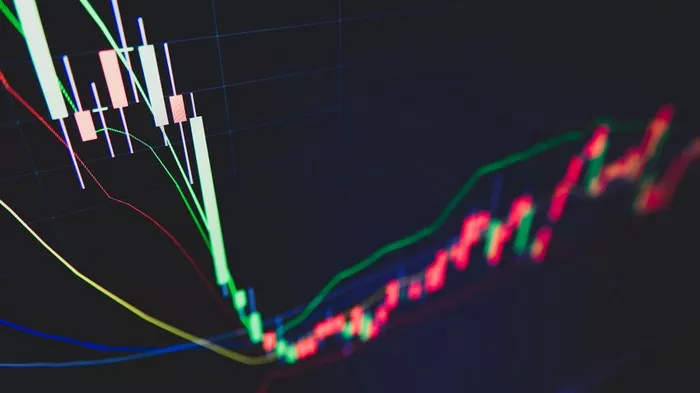Stock futures and index futures are essential financial instruments that play a pivotal role in the world of finance and investment. These derivatives provide investors and traders with valuable tools for managing risk, speculating on market movements, and hedging their portfolios.
1. Stock Futures: A Closer Look
Stock futures are financial contracts that obligate the buyer to purchase and the seller to sell a specific quantity of shares of a particular stock at a predetermined price on a future date. These contracts are standardized and traded on futures exchanges. Stock futures serve several crucial purposes:
Hedging: Investors use stock futures to hedge against potential price fluctuations in individual stocks. By taking an opposite position in futures, they can offset losses in their stock holdings.
Speculation: Traders can speculate on the future price movements of individual stocks without owning the underlying assets. This allows for leveraged bets on both rising (going long) and falling (going short) stock prices.
Arbitrage: Arbitrageurs take advantage of price differentials between the futures and the actual stock. They simultaneously buy low and sell high to profit from these discrepancies.
Portfolio Diversification: Stock futures enable investors to diversify their portfolios by gaining exposure to a broad range of stocks through a single futures contract.
2. Index Futures: A Comprehensive Overview
Index futures, on the other hand, are financial contracts tied to the performance of a specific stock market index. These contracts allow traders and investors to speculate on the overall movement of an index, rather than individual stocks. Key characteristics and uses of index futures include:
Benchmark Tracking: Index futures are often used to track the performance of major stock market indices like the S&P 500, Nasdaq-100, or Dow Jones Industrial Average. Investors use them as a means to mimic the returns of these indices.
Risk Management: Portfolio managers and institutional investors utilize index futures to hedge their exposure to broad market movements. By taking a short position in index futures, they can offset potential losses in their portfolios when the market declines.
Asset Allocation: Index futures allow investors to implement asset allocation strategies by gaining exposure to various asset classes, including equities, fixed income, and commodities, through futures contracts linked to different indices.
Speculation: Traders speculate on the overall direction of the stock market using index futures. They can go long if they anticipate an uptrend or short if they expect a downturn.
3. Key Differences: Stock Futures vs. Index Futures
While both stock futures and index futures fall under the category of futures contracts, they have distinct differences:
Underlying Asset: Stock futures are tied to individual stocks, while index futures are based on the performance of a market index. This fundamental distinction affects the diversification and risk exposure of each.
Liquidity: Index futures typically exhibit higher liquidity compared to stock futures. Market indices encompass a wide range of stocks, making them more liquid and attractive to traders.
Risk Profile: Stock futures carry company-specific risks, such as earnings reports or corporate events. Index futures, on the other hand, are influenced by broader market factors and are less susceptible to individual stock movements.
Diversification: Index futures inherently offer diversification because they represent a basket of stocks. Stock futures provide exposure to a single stock, which can be riskier.
4. Trading and Settlement
Trading and settlement mechanisms for both stock futures and index futures follow standardized procedures:
Trading Hours: Both types of futures contracts have specific trading hours, typically overlapping with the regular trading hours of the underlying assets. Some futures markets also offer extended trading hours.
Contract Size: Each futures contract has a predetermined contract size, specifying the quantity of the underlying asset. For stock futures, this size corresponds to a specific number of shares of the underlying stock. Index futures contracts are typically cash-settled and have a specified monetary value per contract point.
Expiration Dates: Futures contracts have predetermined expiration dates. Stock futures often have quarterly expiration cycles, while index futures can have more frequent expiration dates.
Settlement: Stock futures can be settled through physical delivery of the underlying stock or cash settlement. Most index futures, however, are cash-settled, meaning the contract is settled in cash based on the difference between the contract price and the final index value.
5. Margin Requirements and Leverage
Both stock futures and index futures involve the use of margin, allowing traders to control a larger position with a relatively small amount of capital. However, margin requirements and leverage can vary between the two:
Margin Requirements: Margin requirements for stock futures are often higher than those for index futures. This is because the risk associated with individual stocks is typically higher than the risk associated with a diversified index.
Leverage: Leverage is a double-edged sword. While it allows traders to amplify potential profits, it also increases the risk of substantial losses. Traders need to be cautious and manage their risk effectively when using leverage in both stock and index futures trading.
6. Tax Considerations
Tax treatment can differ between stock futures and index futures:
Stock Futures: Gains and losses from trading stock futures are typically treated as capital gains and losses for tax purposes. Tax rates may vary depending on the trader’s holding period.
Index Futures: In many jurisdictions, gains and losses from index futures trading are considered ordinary income or loss. Traders should consult tax professionals to understand the tax implications in their specific location.
Conclusion
Stock futures and index futures are valuable financial instruments that cater to different investment objectives and risk profiles. Stock futures provide exposure to individual stocks and are used for hedging, speculation, and diversification. Index futures, on the other hand, are linked to market indices, offering diversification, risk management, and benchmark tracking.
Understanding the differences, similarities, and applications of these futures contracts is crucial for traders, investors, and portfolio managers. These derivatives not only provide opportunities for profit but also serve as essential tools for managing risk and constructing well-balanced investment portfolios in the dynamic world of financial markets.


